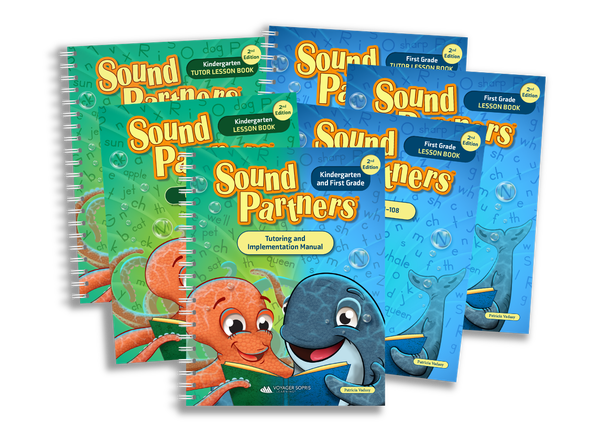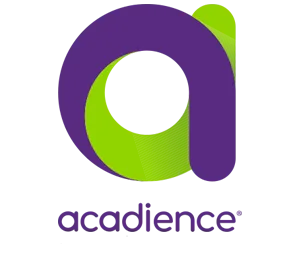Conducting Word Study in Classrooms
Word study is an effective strategy for teaching reading and writing to early learners. It is an evidence-based teaching method founded on recognizing word sounds and patterns rather than memorizing unconnected words. Word study instruction needs to be experiential, collaborative, and inclusive to all readers in the classroom to effectively engage all students to study words and apply their knowledge in authentic learning situations.
How do students learn to read and write? In the past, word recognition has been primarily focused on rote memorization. Derived from the science of reading, word study has proven to be an effective way to teach students word recognition and word sounds. Word study is composed of experiential learning activities that lead students to understand the generalizations that underlie how to read and spell words. The essential elements of effective word study are that it is integrated, developmental, explicit, and experiential.
Preparing To Teach Word Study
Word study is an evidence-based teaching method founded on learning word patterns rather than memorizing unconnected words. To effectively introduce the structure of words to students, proper planning is necessary to prepare for instruction, activities, and assessment. Students must be able to fully engage in the practice of studying words and word patterns.
Routine and ongoing assessments can help craft a systematic word study program. For substantial progression to occur, it is crucial to first understand each student’s basic understanding of phonics, vocabulary, and spelling. Such assessments can help educators form successful and effective small groups for activities to practice word study. Instruction needs to be sequential to help each student progress in their understanding of word patterns.
Assessing Students’ Word Knowledge
By implementing diverse assessment strategies, educators can create more personalized approaches to word study instruction. Assessing student knowledge with solutions like the Acadience® Suite of assessments, helps to provide essential insights and identify specific needs for individuals—helping determine how to divide them into small groups. Teachers can group students with similar needs or skill levels for targeted instruction. The assessment processes could include spelling screeners and phonics and/or word reading inventories.
Preparing for Word Study
Teachers can prepare and implement word study instruction in several ways. They should adopt a systematic and explicit approach to word study instruction, while also incorporating extensive reading and writing practice to enhance students' understanding. In recognizing the reciprocal relationship between reading and writing development, word study instruction should integrate phonics, spelling, and vocabulary. Following is a visual example of ways to implement word study instruction into current reading and writing practices.
Reading | Writing |
|---|---|
Phoneme/Grapheme Correspondences | Spelling |
Contextual analysis to identify unfamiliar words | Word Building |
Word pattern recognition | Morphology Instruction |
Effective word study instruction is crucial for developing students' reading, writing, and vocabulary skills. It is necessary to immerse students in engaging reading and writing practice to enhance their understanding of word study. This approach allows students opportunities to apply their word study knowledge, leading to better retention and development of literacy skills.
The Power of an Effective Sound Wall
Word walls have been a fun classroom tool to help students recognize sight words (sometimes referred to as high-frequency words). However, word walls are based on knowing the accurate spelling of a word, so they must be created by the teacher. Unfortunately, this process means students do not get to experience hands-on learning to practice reading new, unfamiliar words.
When learning a language, the sounds of speech are understood well before understanding how to match a particular sound with its corresponding letter—the process needed for accurate spelling. So, rather than creating word walls, sound walls are a more powerful and effective tool for word study. As discussed in Putting Sound Walls to Practice and the webinar Sound Walls in Your Classroom: The Pathway to Reading Fluency, students work together to group words based on their sounds, not their spelling. In this process, students get the opportunity to engage in word study more independently from the teacher as they identify sounds and letters collaboratively.
Sound walls also aid in familiarizing students with the particular phonemes in words. When students recognize the way their mouth feels and looks when producing sounds, they are better equipped to connect speech to print. Incorporating meaningful word work activities using these sound walls is crucial for students learning how to read and write.
Strategy for Supporting Students' Use of Word Study Instruction
To support students' use of word study instruction and make learning more inclusive and participatory, teachers can employ various strategies that engage students in active, hands-on learning experiences. By implementing a variety of the strategies next listed, educators can craft inclusive and experiential word study environments. These diversified strategies cater to different learning needs and keep all students engaged in active, meaningful learning experiences.
Interactive Word Study Activities
- Word Sorts
- Word Building
- Word Hunts
- Mix and Fix
Multisensory Approaches
- Sensory Exploration
- Color Coding
Gamification and Technology Experiences
- Word Work Dice Games
- Digital Word Sorts
- Word Riddles
Inclusive Learning Strategies
- Flexible Formats
- Multiple Representations
- Assistive Technology
Collaborative Learning
- Peer-to-Peer Support
- Group Projects
Personalized Learning
- Word Work Tic-Tac-Toe
- Individualized Word Lists
Reflection
- Think-Pair-Share
- Word Study Notebooks
The Effectiveness of Word Study Instruction: A Case Study
Sound Partners is a research-based, supplementary tutoring program designed to enhance early reading skills. With individualized instruction, Sound Partners emphasizes phonics, spelling, and reading practice with decodable texts. Sound Partners benefits students learning to read in grades K–1 and provides intervention for students in
grades 2–3.
Effective Word Study Instruction
Word study instruction is a powerful and effective learning tool that is crucial for teaching early learners to read and write. Word study instruction must be integrated, developmental, explicit, and experiential to produce an active and engaging learning environment. For students to effectively learn to study the sounds, spellings, and uses of words, implementation of word study in the classroom may constitute a time-consuming planning process. Voyager Sopris Learning® offers several solutions to support educators in implementing meaningful word study instruction for their students.


